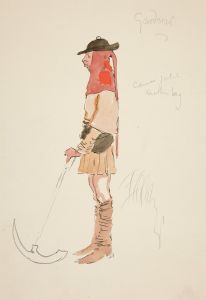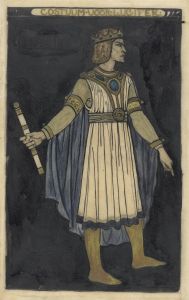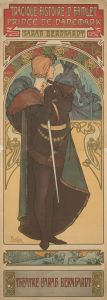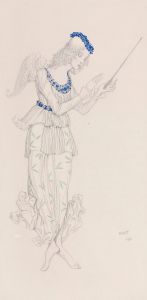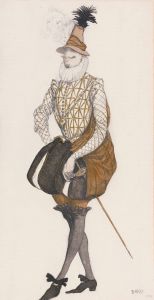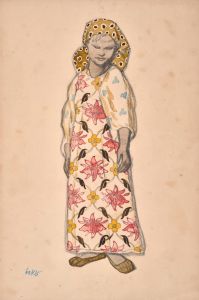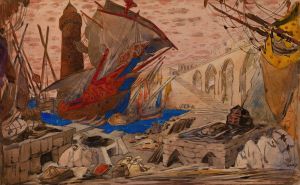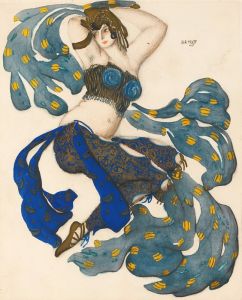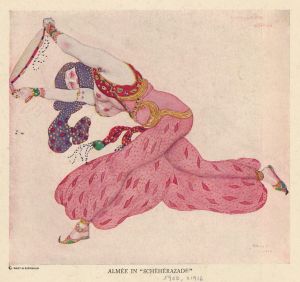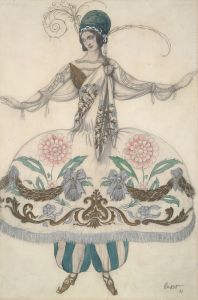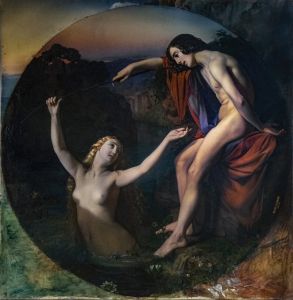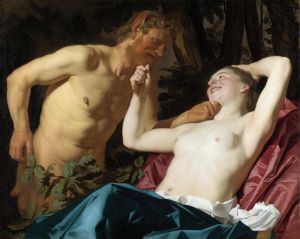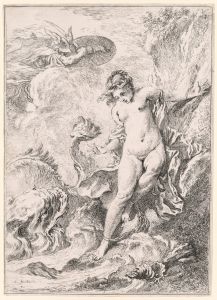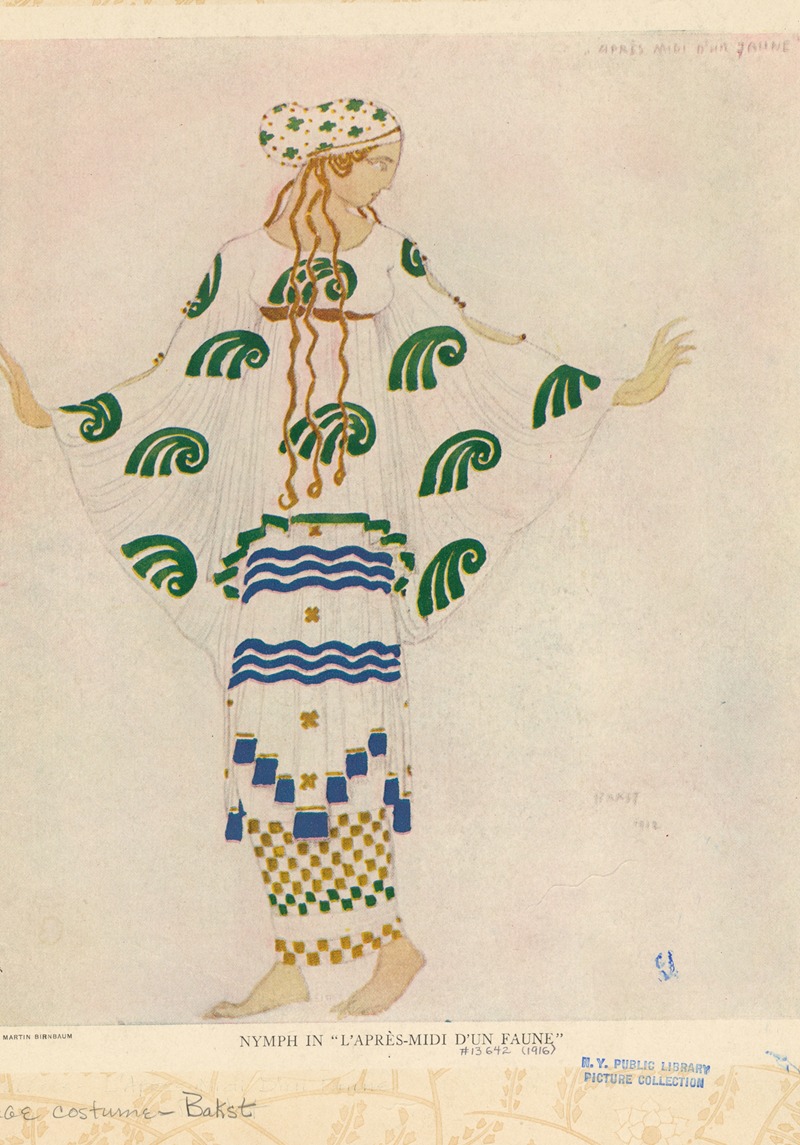
Nymph in ‘L’après-midi d’un faune’
A hand-painted replica of Léon Bakst’s masterpiece Nymph in ‘L’après-midi d’un faune’, meticulously crafted by professional artists to capture the true essence of the original. Each piece is created with museum-quality canvas and rare mineral pigments, carefully painted by experienced artists with delicate brushstrokes and rich, layered colors to perfectly recreate the texture of the original artwork. Unlike machine-printed reproductions, this hand-painted version brings the painting to life, infused with the artist’s emotions and skill in every stroke. Whether for personal collection or home decoration, it instantly elevates the artistic atmosphere of any space.
Léon Bakst, a Russian painter and scene-and-costume designer, created the artwork "Nymph in ‘L’après-midi d’un faune’" as part of his contributions to the ballet "L'après-midi d'un faune" (The Afternoon of a Faun). This ballet, choreographed by Vaslav Nijinsky, premiered in Paris on May 29, 1912, and was based on the symphonic poem by Claude Debussy, which in turn was inspired by the poem "L'après-midi d'un faune" by Stéphane Mallarmé.
Bakst's involvement in the ballet was significant as he was responsible for the set and costume designs, which played a crucial role in the overall aesthetic and reception of the performance. His designs were characterized by their vibrant colors, intricate patterns, and a blend of modern and classical elements, which helped to create a dreamlike and exotic atmosphere that complemented the themes of the ballet.
The painting "Nymph in ‘L’après-midi d’un faune’" depicts one of the nymphs from the ballet. In the context of the performance, the nymphs are ethereal creatures who interact with the faun, a mythical half-human, half-goat figure. The ballet's narrative revolves around the faun's encounter with these nymphs and his subsequent daydreams and desires.
In Bakst's artwork, the nymph is often portrayed in a graceful and sensuous pose, reflecting the fluidity and elegance of the ballet's choreography. The use of color and detail in the painting captures the opulence and exoticism that Bakst was known for, with rich hues and elaborate costumes that draw from various cultural influences.
Bakst's designs for "L'après-midi d'un faune" were groundbreaking at the time and contributed to the avant-garde movement in early 20th-century art and theater. His work with the Ballets Russes, the company that produced the ballet, was instrumental in bringing a new level of artistic innovation to the stage. The collaboration between Bakst, Nijinsky, and Debussy resulted in a production that was both controversial and highly influential, pushing the boundaries of traditional ballet and paving the way for modern dance.
The painting "Nymph in ‘L’après-midi d’un faune’" is a testament to Bakst's artistic vision and his ability to create a visual language that enhanced the storytelling of the ballet. It remains an important piece in the history of theatrical design and continues to be celebrated for its beauty and historical significance.
Bakst's work, including this painting, is held in various collections and museums around the world, where it is studied and admired for its contribution to the development of modern art and theater. His legacy as a designer and artist is marked by his ability to blend different artistic traditions and create works that are both visually stunning and deeply evocative.





